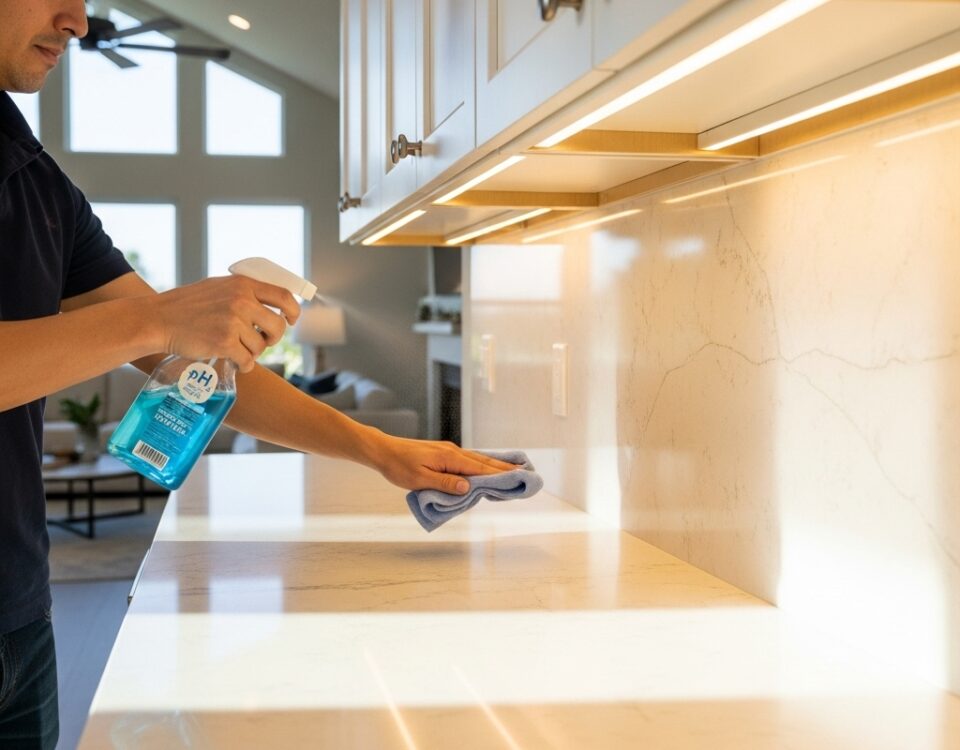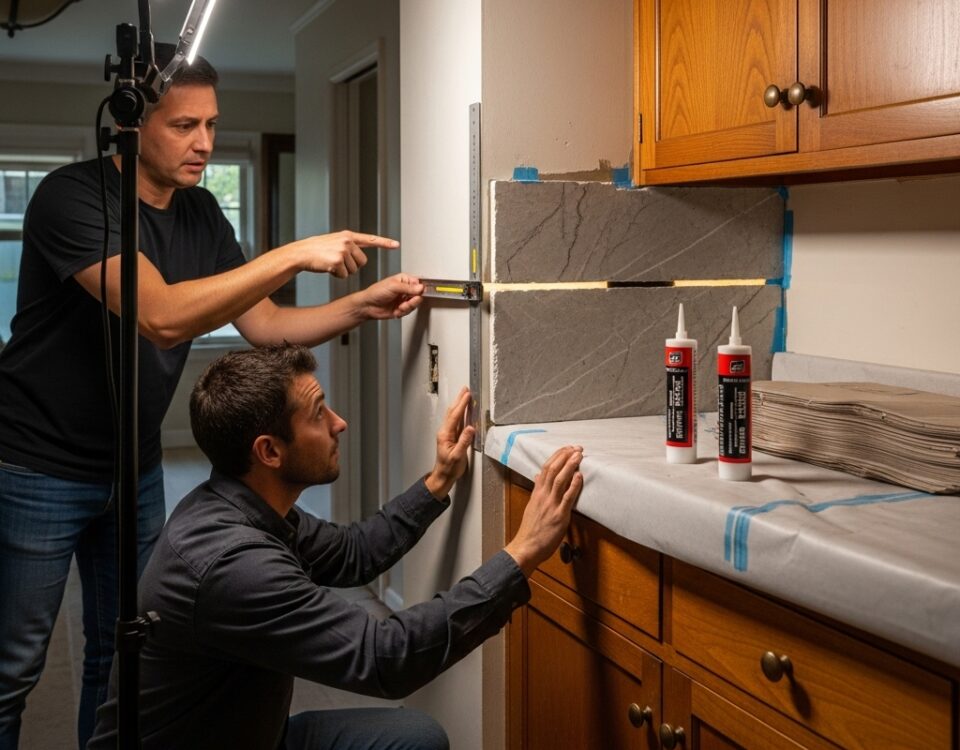The Unique Appeal of a Soapstone Backsplash in Kitchen Design
July 15, 2024Granite Backsplash Ideas to Transform Your Kitchen Space
July 15, 2024Travertine Backsplash Ideas: Bringing Natural Beauty to Your Kitchen
Travertine, a form of limestone deposited by mineral springs, offers a timeless appeal when used as a kitchen backsplash. Its natural, subtle variations in color and texture provide an earthy backdrop that complements a wide range of cabinetry and countertops, from classic wood finishes to modern metals. When selecting travertine, consider the finish—polished for a sleek, reflective sheen, or honed for a more matte, contemporary look. Innovative installation techniques, such as herringbone or chevron patterns, can further personalize the space, turning the backsplash into a striking focal point. As we explore the practical aspects of incorporating travertine into your kitchen, consider how this material could not only enhance the aesthetic but also the functionality of your cooking space.
Exploring Travertine Color Varieties
What makes travertine backsplashes truly stand out are their diverse color palettes, ranging from ivory and beige to deeper walnut and rust hues, offering versatile design possibilities for any kitchen or bathroom.
This natural stone, with its inherent warmth and inviting texture, can effortlessly enhance a sense of community and togetherness in any space. Each slab of travertine is unique, with subtle variations in color and pattern that reflect its natural origins, making it an ideal choice for homeowners seeking a personalized touch in their decor.
The lighter shades of travertine can create a soft, serene atmosphere that brightens up any cooking or bathing area, while the darker tones provide a striking contrast and depth, ideal for creating focal points or accent walls. Innovatively, mixing hues can delineate areas within larger spaces, subtly zoning entertainment from functional areas without the harshness of partitions.
For practical purposes, the resilience of travertine makes it superb for high-traffic areas. Its natural pores and texture contribute to its slip resistance, a crucial safety feature in wet areas like kitchens and bathrooms.
Embracing the full spectrum of travertine’s color variations opens up a plethora of design opportunities that are not only aesthetically pleasing but also foster an inclusive and welcoming environment.
Installation Tips and Techniques
When installing a travertine backsplash, it is essential to consider both the aesthetic alignment of the tiles and the technical requirements for a durable application. Begin by ensuring your wall surface is clean, dry, and flat. Uneven surfaces can lead to improper adhesion and uneven tile layout, which detracts from the beauty of the backsplash.
Use a notched trowel to apply a thin-set mortar specifically suited for natural stone; this helps prevent staining and enhances the stone’s durability.
For cutting the travertine, a wet saw with a diamond blade is recommended to ensure clean, precise cuts. This is particularly important when working around outlets or corners. As you lay the tiles, use spacers to maintain even spacing, creating a harmonious pattern that resonates with the room’s aesthetics.
It’s vital to check the level of each tile with a spirit level to avoid an uneven finish.
Once the tiles are set, allow the mortar to cure as directed before grouting. Choosing a grout color that complements the travertine can integrate the backsplash into your kitchen’s overall design seamlessly.
Seal the tiles and grout to protect against moisture and stains, thereby maintaining the backsplash’s elegant appearance and ensuring it remains a point of pride in your kitchen.
Read More:
Granite Backsplash Ideas to Transform Your Kitchen Space
The Unique Appeal of a Soapstone Backsplash in Kitchen Design




